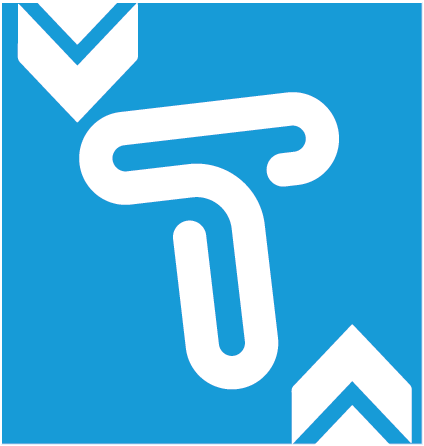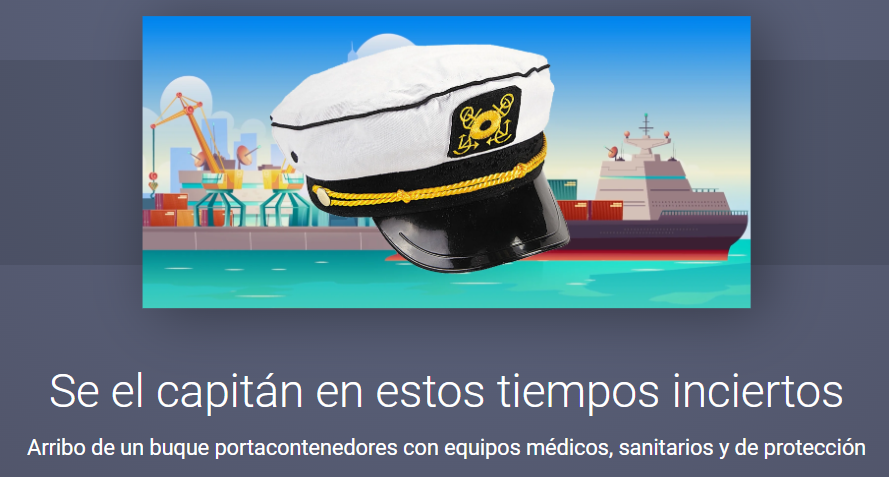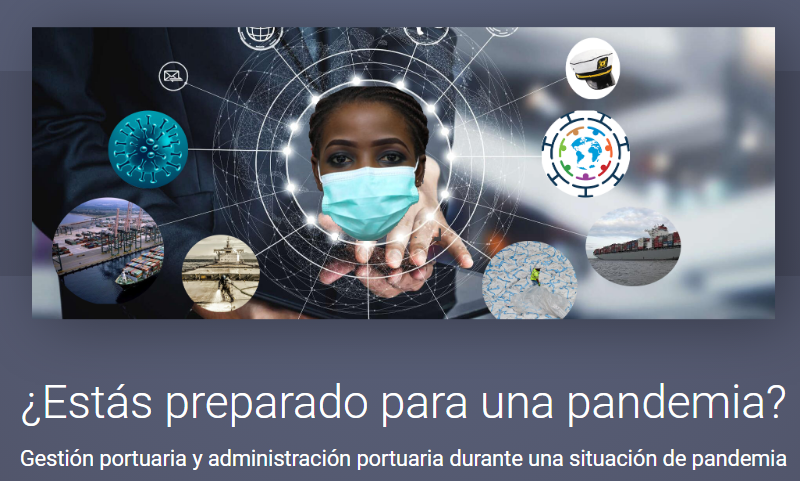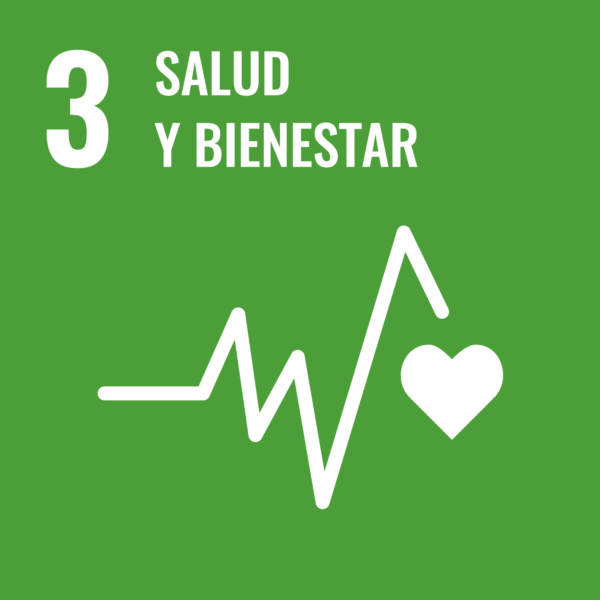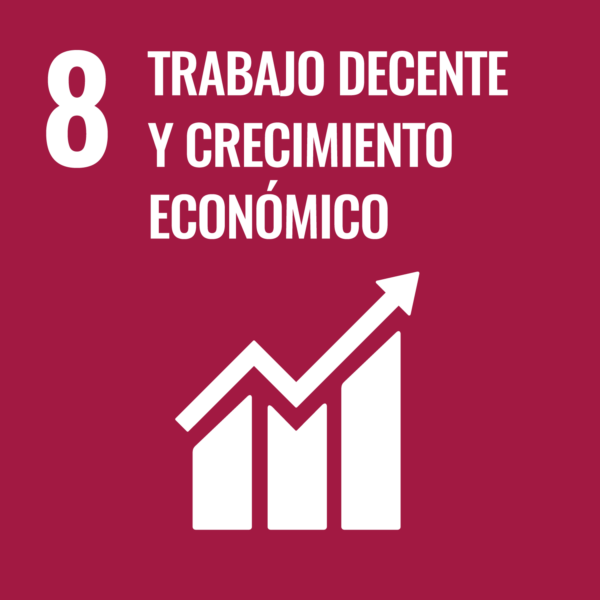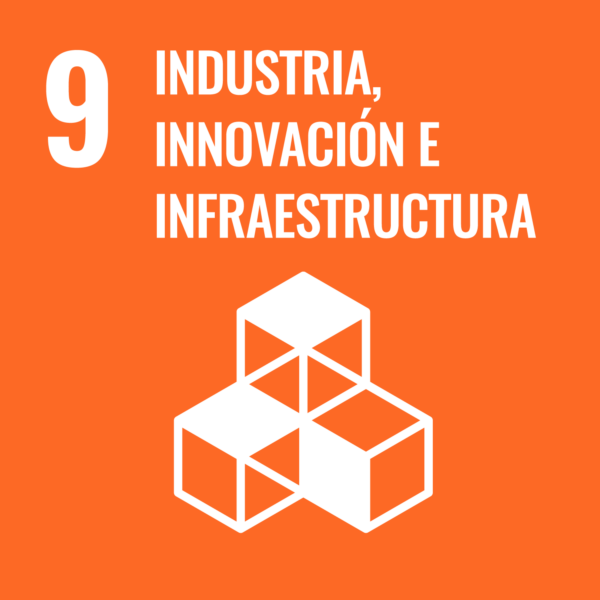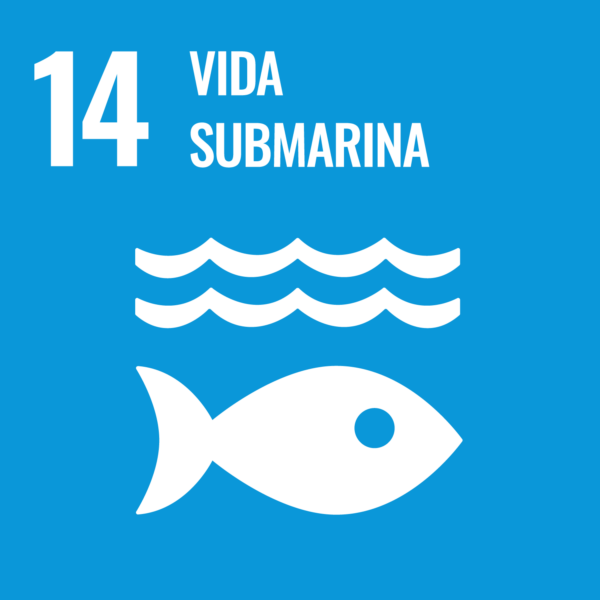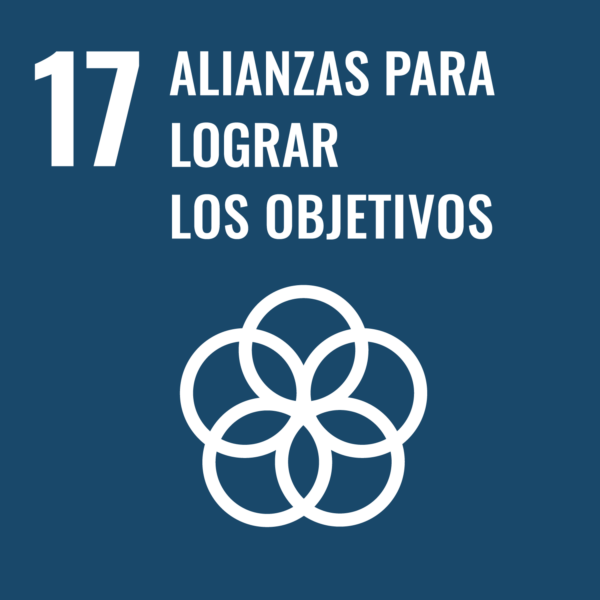El curso especial de TrainForTrade, Curso de Puertos Resilientes ante las Pandemias, ha desarrollado habilidades esenciales para que los gestores de la comunidad portuaria ayuden a proteger a las personas y garantizar el comercio vital en los puertos en una situación de pandemia. Sus principales objetivos fueron garantizar la salud de los trabajadores y usuarios portuarios, mantener los puertos seguros y operativos durante las pandemias, y facilitar la implementación de protocolos para asegurar la salud y la seguridad.
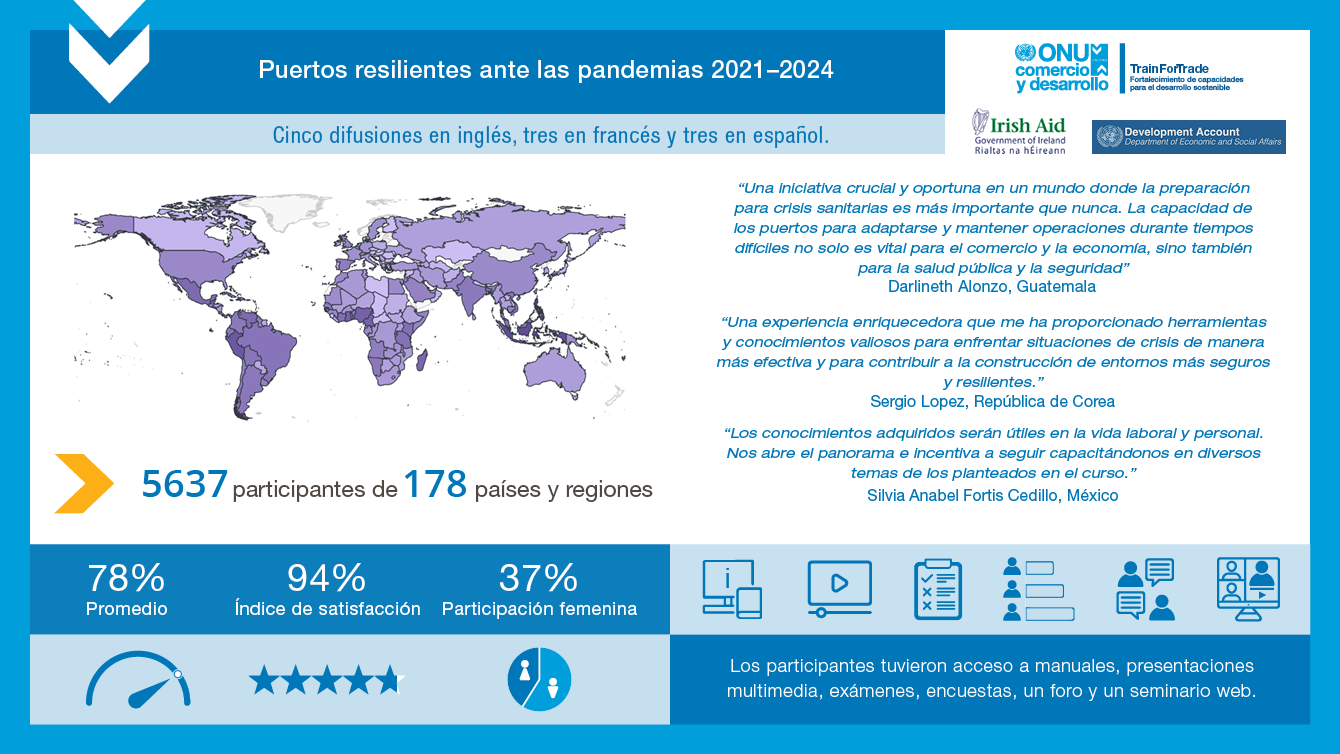
¿Quieres jugar a los ejercicios de simulación?
Este curso fue la primera capacitación de TrainForTrade en la que se implementaron nuevos métodos de gamificación para desarrollar y renovar la experiencia de aprendizaje en línea de los participantes. Los participantes completaron dos ejercicios de simulación en línea para consolidar los conocimientos adquiridos durante el curso. Los ejercicios pusieron a prueba sus habilidades para tomar decisiones en una simulación estilo videojuego de roles en un contexto de pandemia.
Descripción del curso
Puertos Resilientes ante las Pandemias fue un curso en línea asincrónico/autodirigido y moderado que se impartió durante dos semanas, seguido por dos ejercicios de simulación y un seminario en línea (ver la agenda más abajo para más detalles). Expertos portuarios interactuaron con los participantes en línea en los foros de discusión de cada una de las secciones del curso.
El curso en línea moderado estuvo estructurado en cuatro secciones, ofreciendo una visión precisa y ordenada de los diferentes aspectos que debe tener en cuenta un puerto o una organización portuaria en una situación de pandemia. Se abordaron una visión general y acciones específicas, la parte psicológica y emocional relacionada con los trabajadores, las herramientas tecnológicas y también las acciones destinadas a garantizar la actividad principal de un puerto en la gestión del flujo de mercancías.
Al finalizar la impartición del curso, se invitó a los participantes a un seminario web de 90 minutos para debatir temas, presentar buenas prácticas y reflexionar sobre recomendaciones de políticas.
Manual del curso
Videos del curso
Construir resiliencia en los puertos
Durante los primeros años de esta década, la pandemia del coronavirus representó una amenaza global, causando impactos severos en sociedades y naciones enteras. La industria marítima desempeñó un papel esencial en la respuesta. Aproximadamente el 80 % del comercio mundial se transporta por vía comercial marítima comercial. Esto incluye artículos de primera necesidad como suministros y equipos médicos vitales, así como alimentos, energía, materias primas, y productos manufacturados y sus componentes. Estos son esenciales para cubrir necesidades humanas básicas, salvar muchos empleos en la manufactura, apoyar el comercio internacional y, en última instancia, mantener a flote la economía global. Por ello, los puertos del mundo deben permanecer accesibles para los barcos durante una crisis, y debe permitirse el relevo de tripulaciones. Además, se deben tomar medidas adicionales para proteger a los trabajadores de la comunidad portuaria y garantizar que las operaciones portuarias puedan continuar en todas las situaciones.
Resumen de políticas de la UNCTAD sobre la resiliencia portuaria
Los participantes del curso en 2021 fueron invitados a sugerir recomendaciones que podrían utilizarse en el futuro para ayudar a elaborar consejos de política relacionados con la respuesta a una pandemia en las comunidades portuarias. Los participantes en los tres idiomas aportaron 300 ideas sugeridas para recomendaciones políticas. Las recomendaciones se compartieron en la página del curso, y se invitó a los participantes a votar por las que preferían. Las siguientes recomendaciones políticas se publicaron en febrero de 2022 en el resumen de Políticas No. 93 de la UNCTAD sobre Estrategias emergentes para los puertos durante la pandemia:
- Planes de continuidad de negocio para desarrollar protocolos de actuación ante escenarios de pandemia.
- Escenarios de planificación de contingencia para la implementación exitosa de acciones preventivas e identificar respuestas apropiadas a casos sospechosos de infección.
- Una estrategia de comunicación dirigida a todos los grupos de interés de la comunidad portuaria.
- Educación y apoyo al personal portuario para mantener el bienestar físico y mental durante una pandemia.
- Provisión de instalaciones de vacunación, centros de prueba y rastreo de contactos.
- Disponibilidad y manejo de la tecnología adecuada para apoyar al personal apoyándose en el teletrabajo y reuniones en línea.
- Designación del personal de transporte y portuario como trabajadores/as esenciales con la responsabilidad particular del mantenimiento de los servicios.
- «Carriles verdes» en las redes de carreteras existentes y atracaderos exclusivos para embarcaciones en los puertos para el transporte rápido de suministros de emergencia.
Buenas prácticas
(1) Bajo el Convenio sobre el Trabajo Marítimo de 2006 de la Organización Internacional del Trabajo (OIT), los Estados de abanderamiento deben garantizar que todos los marinos en barcos que enarbolan su bandera estén cubiertos por medidas adecuadas para la protección de su salud y que tengan acceso a una atención médica rápida y adecuada mientras trabajan a bordo. El Convenio también exige que los Estados portuarios aseguren que los marineros a bordo de barcos en su territorio que requieran atención médica inmediata tengan acceso a instalaciones médicas en tierra.
Es crucial mantener las fronteras del país abiertas para todas las formas de transporte de carga, en particular para los puertos considerados activos nacionales esenciales. Los gobiernos deben garantizar que las medidas sanitarias se implementen de manera que se minimicen las interferencias innecesarias con el tráfico y el comercio internacional; en particular, respetando los requisitos del “libre pratique” para los barcos según el Reglamento Sanitario Internacional (RSI).
Los principios de evitar restricciones o demoras innecesarias en la entrada al puerto para barcos, personas y mercancías a bordo también están recogidos en los artículos I y V y en la sección 6 del anexo del Convenio sobre Facilitación del Tráfico Marítimo (Convenio FAL). Esto está respaldado por la Organización Internacional del Trabajo (OIT) y la Organización Marítima Internacional (OMI).
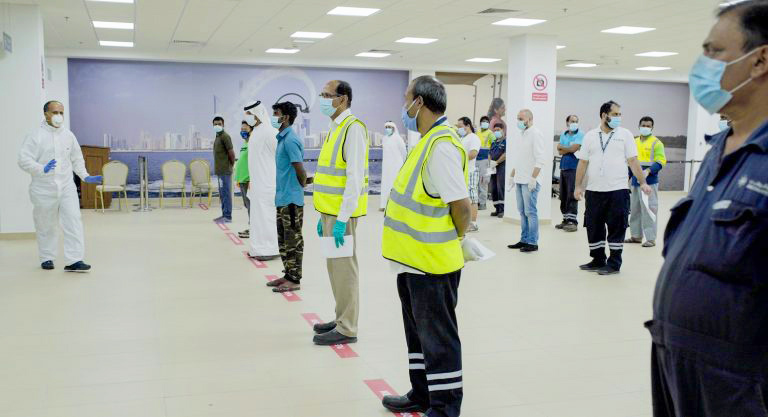
El camino a seguir
A medida que los puertos avanzaban para ganar la lucha contra esta pandemia, era necesario alcanzar varias metas:
- Impulsar las capacidades y la accesibilidad de Internet dentro y fuera de las zonas portuarias, tanto para los trabajadores portuarios como para los usuarios. La conectividad, como señala el Grupo del Banco Mundial, es en definitiva un “bien público”;
- Aumentar la conectividad y la interoperabilidad de datos en las cadenas de suministro globales mediante la implementación de Sistemas Comunitarios Portuarios y aprovechando tecnologías de libro mayor digital como Blockchain, tal como promueve el Foro Económico Mundial;
- Desarrollar cadenas de suministro más cortas y diversificadas, apoyadas por automatización avanzada y reubicaciones que protejan el empleo, en línea con los objetivos de cambio climático;
- Reforzar la cooperación regional portuaria para construir nodos comerciales más resilientes que permitan afrontar futuras crisis similares a la pandemia de COVID-19;
- Diseñar nuevas políticas para puertos resilientes e inclusivos que alcancen a las personas más vulnerables, que a menudo dependen del tejido económico y social de las comunidades portuarias; y
- Impulsar enfoques innovadores de formación y bienestar para todos los niveles de personal, aprovechando la tecnología.
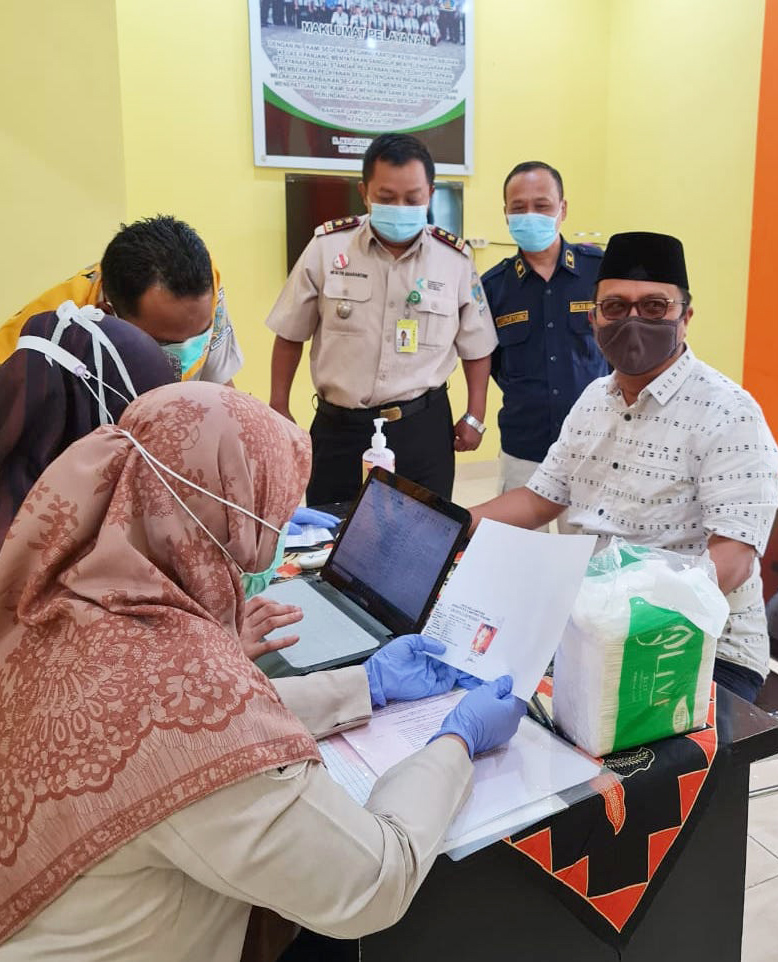
Protocolo de crisis
Aquí hay un ejemplo de un protocolo de crisis que puede utilizarse como guía sobre las acciones que deben implementarse en relación con niveles de crisis estrictamente definidos.
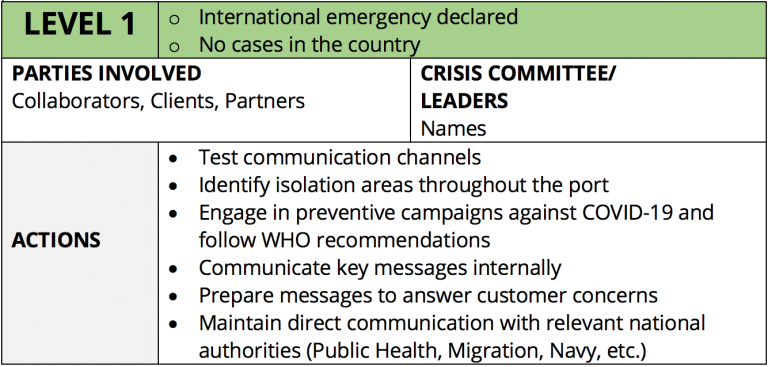
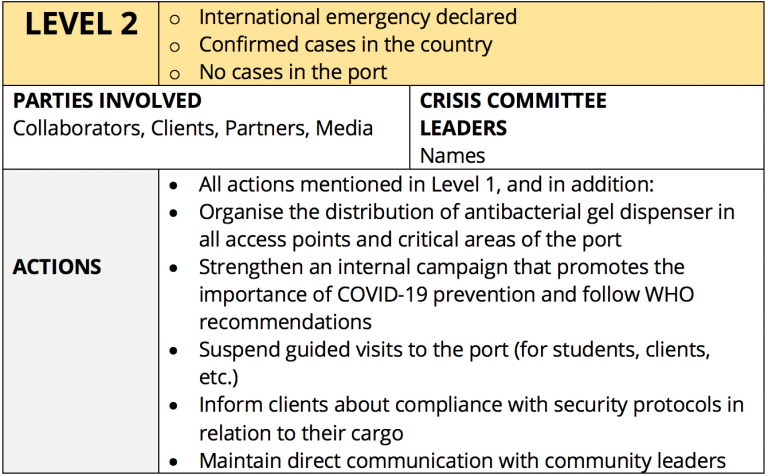
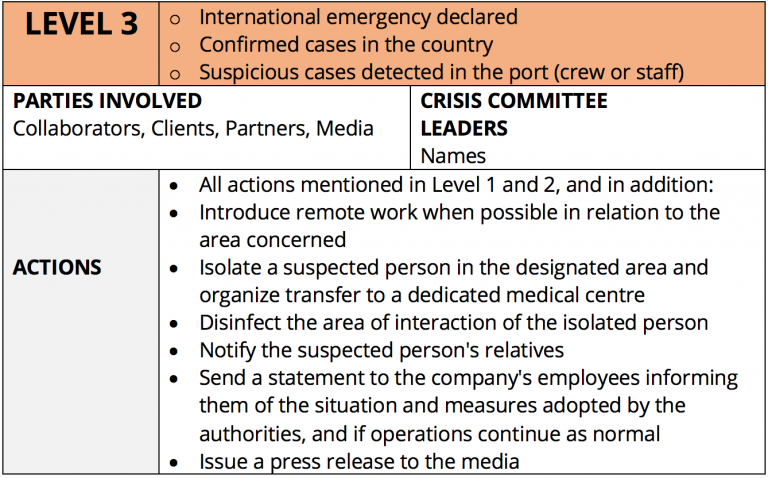
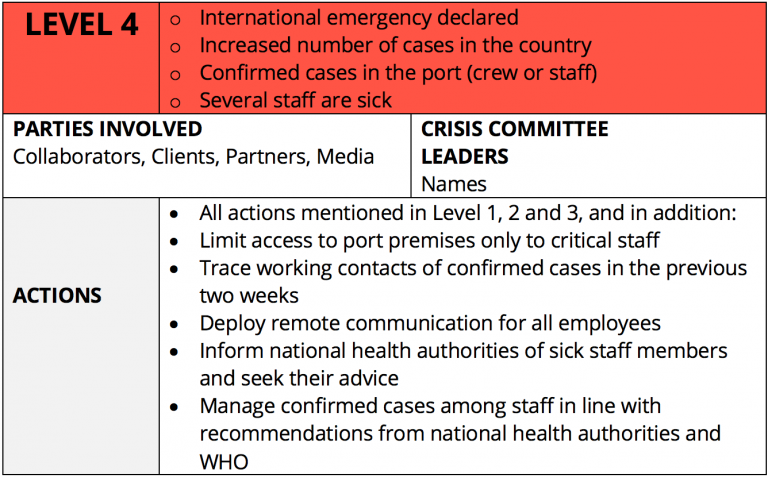
ODS relacionados con este proyecto:
Apoyo:
Este proyecto fue financiado por la Tranche 13 de la Cuenta de Desarrollo de las Naciones Unidas (COVID-19) y por Irish Aid.



